Mobile Computers / Handheld Computers
- Handheld Computer BT-A2000/A1000 series
- Handheld Computer BT-A500 series
- Handheld Computer BT-A700 series
- Handheld Mobile Computer BT-W300/W200 series
- Handheld Mobile Computer BT-W100 series
- Handheld Mobile Computer BT-W80 series
- Handheld Mobile Computer BT-W70 series
- Ultra-Compact Handheld Terminal BT-1000 series
Mobile Computers / Handheld Computers

Handheld mobile computers speed up data collection for many business-critical applications in industries such as manufacturing and logistics. Improve work efficiency with a large touch screen and ability to instantly read dirty or distant barcodes. The OCR function can optimise work even if no barcodes are present.
Products Lineup

Equipped with a triple camera and an AI core, the Android™ handheld computer BT-A2000/A1000 Series boasts a reading range three times that of conventional models thanks to this camera and KEYENCE’s proprietary reading technology. Barcodes can be read in an instant from any position with minimal movement required. Furthermore, the reading-only AI core automatically corrects challenging codes such as incomplete, dirty, and worn codes, making them readable. The result is greatly increased work efficiency through a reduced load in a variety of reading situations. Compact and equipped with a large screen, this handheld computer has an optimal ergonomic design that achieves usability and viewability. Additionally, because it is available with a 3-inch or 4-inch LCD, you can select the type that matches your application.
Features
Easy Reading from Any Position with Minimal Movement Required Leads to Significantly Increased Work Speed.
The triple camera design offers in-focus reading at short, medium, and long ranges for more than three times the reading distance of conventional models. Codes can be read not only at short distances but at long distances that conventionally prohibited reading, eliminating the need to reach or squat, allowing operators to read codes from natural positions with minimal movement required. The result is significantly increased work speed.

- 2x
- 1.75x
- 1.5x
- 1.25x
- 1x, selected
- 0.75x
- 0.5x
- Chapters
- descriptions off, selected
- captions settings, opens captions settings dialog
- captions off, selected
This is a modal window.
Beginning of dialog window. Escape will cancel and close the window.
End of dialog window.
This is a modal window. This modal can be closed by pressing the Escape key or activating the close button.
Before

Short reading distance makes it necessary to reach or squat.
After

Increased reading distance allows for easy reading from any position with minimal movement required.
Instant Reading of Challenging Codes and Printed Text
The reading-only AI core comes pre-trained with more than 100000 patterns of challenging codes. Incomplete codes are automatically corrected to make them readable. KEYENCE’s proprietary algorithm also provides unparalleled reading performance in a wide variety of applications, including reading at an angle and reading of incomplete, plastic-wrapped, dirty, or distorted codes.

- 2x
- 1.75x
- 1.5x
- 1.25x
- 1x, selected
- 0.75x
- 0.5x
- Chapters
- descriptions off, selected
- captions settings, opens captions settings dialog
- captions off, selected
This is a modal window.
Beginning of dialog window. Escape will cancel and close the window.
End of dialog window.
This is a modal window. This modal can be closed by pressing the Escape key or activating the close button.
Instant reading even with plastic wrapping

Instant reading with DPM codes

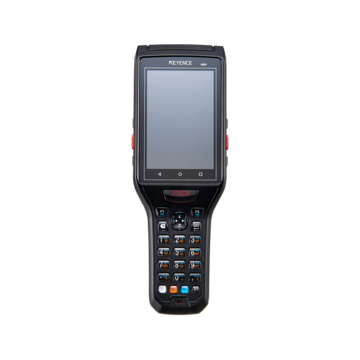
The BT-A500 Series Handheld Mobile Computer with Android™ OS dramatically improves on-site efficiency by boosting the speed of repeated daily tasks. In addition to the ability to instantly read codes under any conditions, the shape of the device is optimised for Android OS performance, allowing for fast one-handed operation. This model also has excellent durability for tough conditions. The rigid chassis and damper mechanism enable the device to withstand drops from 2 m(6.6 ft) as well as 20000 repeated impacts from 30 cm(0.98 ft). Built-In implementation, maintenance and support tools are also available. The kitting function allows users to copy settings from a single unit to multiple devices and the remote access function enables support and troubleshooting of a device independent of its location.
Features
The Hybrid Scan System Allows for Instant Reading for Near and Far Codes
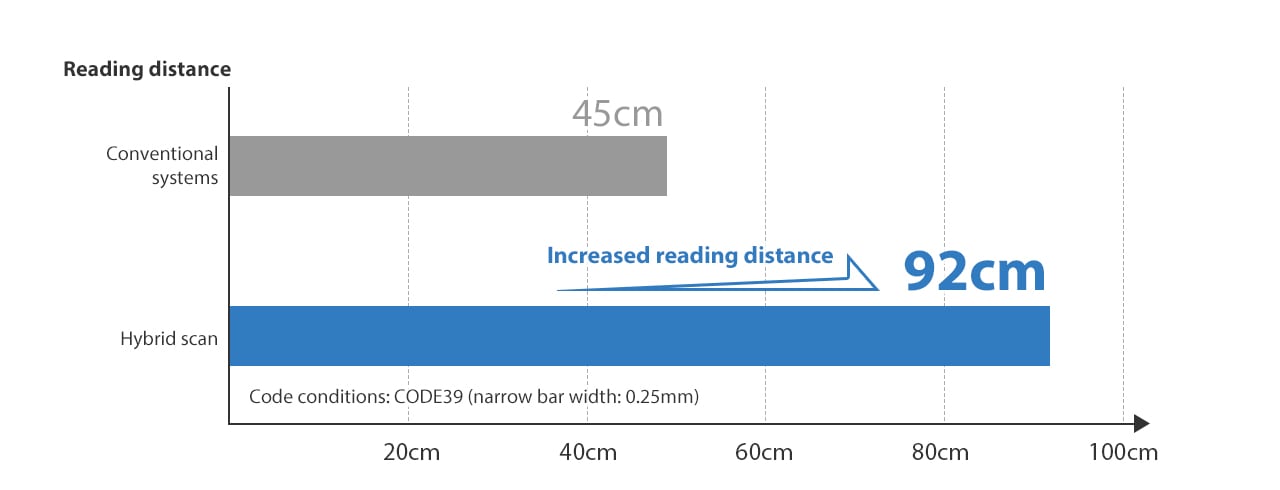
Hybrid Scan System
(Scanning camera + High-resolution colour camera)
Nearby codes are read by the high-speed monochrome camera while far codes are read by the high-resolution colour camera.
The combination of these two scanning systems provides outstanding reading ability.

[Conventional models] Reading from uncomfortable positions
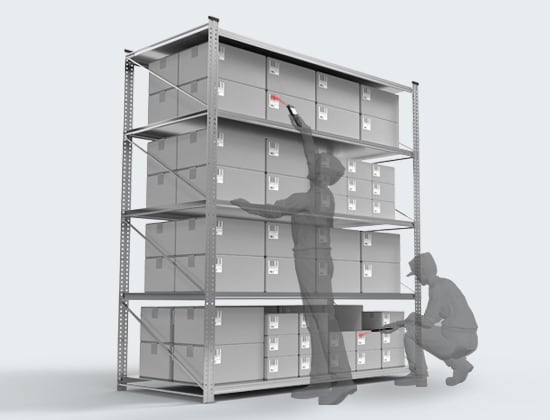
[BT-A500] Easy reading from any position
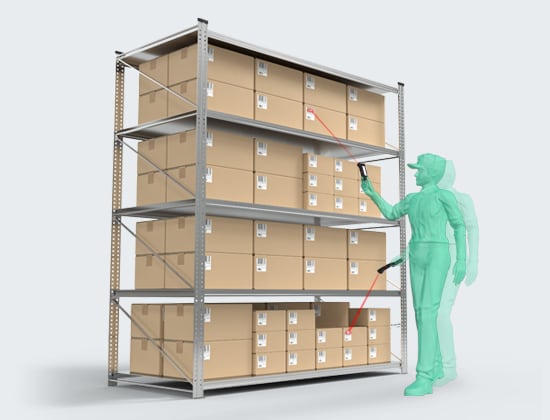
Instant Reading of Any Codes and Printed Text
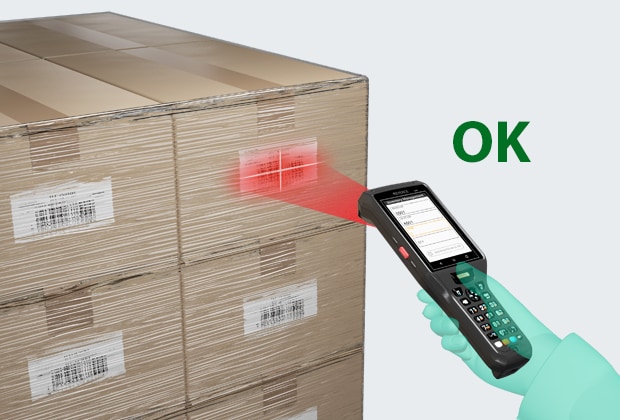

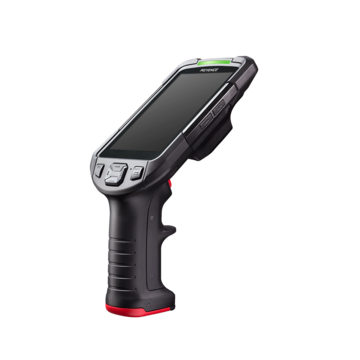
Our new, full-range model of handheld mobile computers, the BT-A700 Series, is capable of reading codes from a minimum distance of 1 in. (2.5 cm) to a maximum distance of 10 m (30 ft). Its impressive reading range and speed enable users to read codes instantaneously in one hand not only while standing but also while seated in a forklift. This leads to impressive productivity improvements. The combination of the first-in-class full-range camera and ultra-high-speed decoding allows instantaneous reading of barcodes even from an angle. The ease of on-site use has also been greatly enhanced. The compact body with a largest-in-class 5-inch screen offers excellent grip to allow stable one-handed operation. Rugged design with a tempered glass screen withstands drops from heights of 2.4 m (8 ft). The device can also be used continuously for up to 32 hours.
Features
Full-Range Camera
KEYENCE developed a proprietary full-range camera capable of capturing codes at the optimum focal point from near-range to far-range distances. This enables code reading across the entire range.
![[Super-high-brightness lens] [Full-range camera] [Laser sight] [High-speed DSP core] Point and read laser sight function](/Images/series_bt-a700_features_01_1973326.jpg)
Excellent One-Handed Operability
The reader is easy to point at the target and uses a gun-grip shape that fits easily in your hand. We combined the conventional design with intuitive keys enabling single-handed operation.
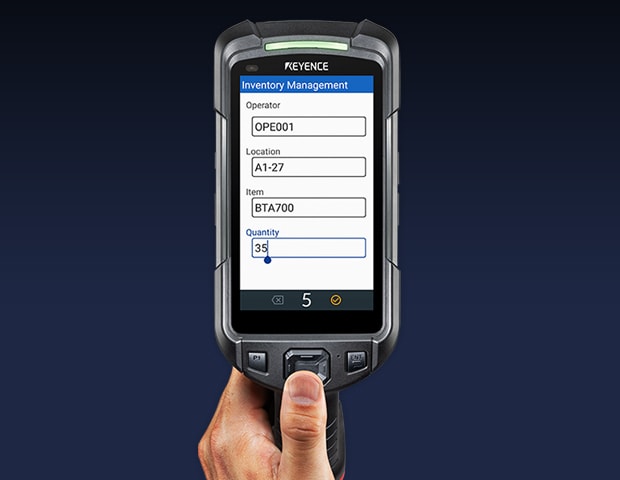
Before
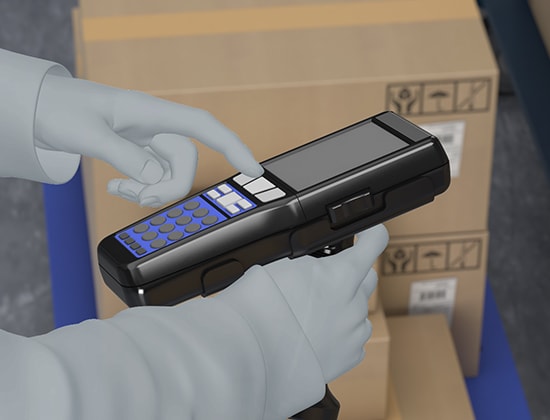
Input using both hands
After
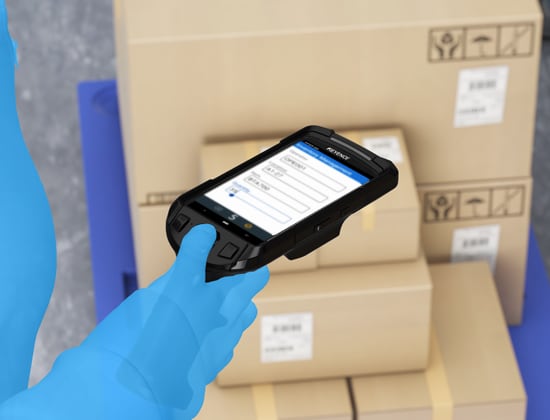
Input using one hand
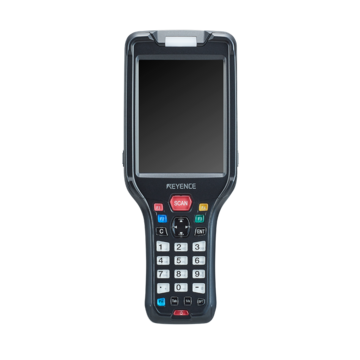
"Instant Reading for Near and Far Codes" Built-In High-Speed Auto-Focus Function
Features
High-Speed Autofocusing for Improved Efficiency with Various Reading Operations
Instantly read codes on the spot whether they are near or far away.
No more squatting, standing on tiptoes or other uncomfortable positions to read.
Reading is easy even at an angle or for dirty/scratched codes, resulting in fewer interruptions.
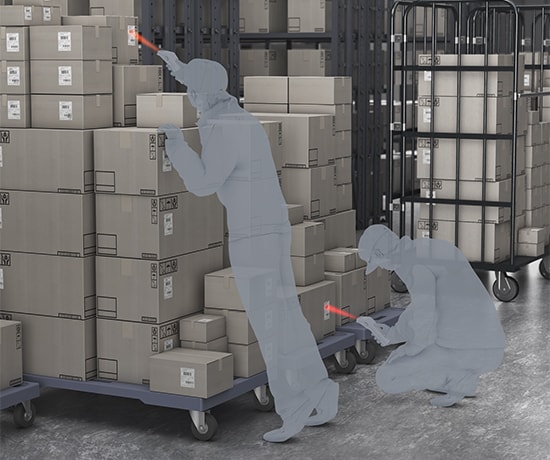

Decoding
Oil stain

Plastic wrapping
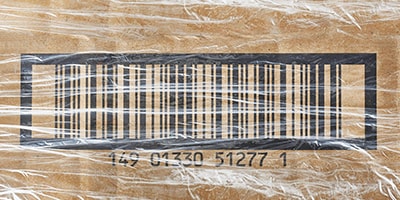
Wrinkles
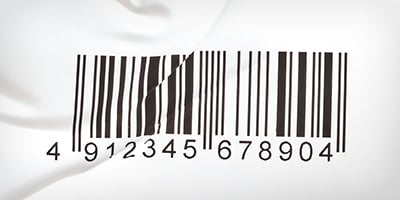
Scratches

Distortion
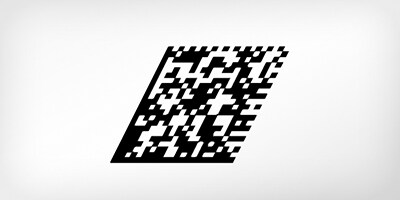
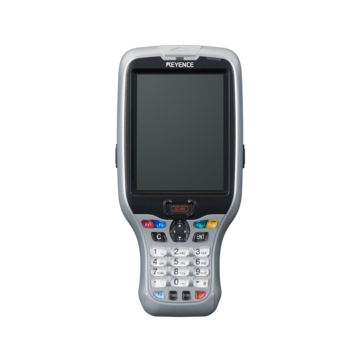
Large display PDA that allows for "one-handed operation"
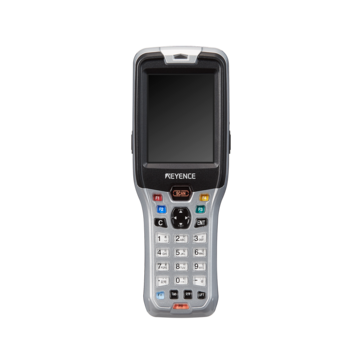
Robust structure to withstand impact up to 3 meters in height
Designed for minimum 28 hours usage or more
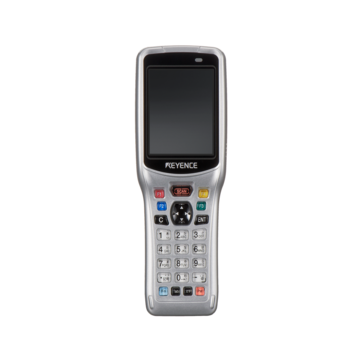
130 g - ultra lightweight body, Slick design of 2.4-inch LCD display
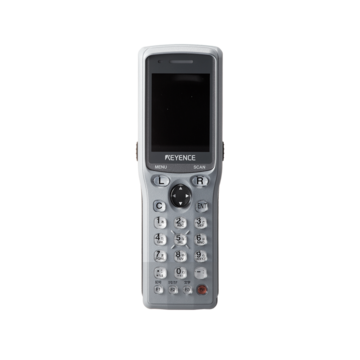
THE NEXT STEP IN HANDY TERMINAL EVOLUTION WITH THE EASE OF USE YOU'VE COME TO EXPECT
Handheld computers are highly portable terminal devices used for reading and collecting data concerning items. In recent years, not only can they read barcodes and 2D codes but they are capable of optical character recognition (OCR) to read characters directly marked on products and parts, such as lot numbers and serial numbers, as well as expiration dates. Unlike handheld code readers used for reading codes only, handheld computers have a CPU and LCD screen built into the body. They can be used for various applications through the use of business programs, as well as for information browsing and alert display. Typical applications are inventory, work-in-progress, and process management of parts, products, and raw materials. Handheld computers must provide excellent operability, durability, waterproofing and dust proofing to enable their use in various worksites in the manufacturing, logistics, retail and wholesale fields.
Benefits of Mobile Computers / Handheld Computers
Barcodes, 2D codes, and characters on product slips, instruction sheets, products, and parts can be instantaneously read, converted into data, and recorded.
It is also possible to record additional information such as the time of reading, which greatly improves the efficiency of warehousing and process management.
Some types of handheld computers can use optical character recognition (OCR) to acquire characters, such as serial numbers and lot numbers directly marked on products and parts, as well as expiration dates. This is effective for both reducing man-hours and preventing careless mistakes during the management of products and parts with no barcodes / 2D codes, which were impossible through visual check and manual entry.
After reading one code, handheld computers can read the information linked with the code automatically or can export information automatically to a specified row/column in Excel or other software.
The data read with handheld computers are saved automatically. To make it easier to collect data from each transaction, the saving format can be determined in advance, which reduces the number of work-hours spent on data management.
Some operation-specific applications may require labour and cost for programming. Since handheld computers allow the setting of business applications without programming, they can save development costs and the time and labour required before the start of the operation.
Handheld computers capable of wireless connection allow readout data to be applied to the system in real-time.
With paper-based aggregation, the overall results can be checked only after operations such as inventory and warehousing are complete and the data is entered into a PC. On the other hand, with wireless type handheld computers, the results can be transmitted as the work is being performed, so the status can be checked in real-time. This enables management with no time lag, which was impossible through paper-based aggregation. This prevents careless mistakes when data is created from paper or inventory is made by several workers. It also prevents mixed-up information in workplaces where the inventory changes frequently.
Handheld Computer Case Studies
Automobiles / Transport Equipment
Typical handheld computer usage examples were explained in “Handheld Computer System Installation Applications,” but this section introduces actual application examples regarding automobiles / transport equipment in the manufacturing industry. Actual examples will be used to explain the problems in various processes at manufacturing sites for automobiles / transport equipment and the advantages provided by installing handheld computers in said sites.
Electrical / Electronic Devices and Semiconductors
This section introduces actual application examples regarding electrical / electronic devices and semiconductors in the manufacturing industry. Actual examples will be used to explain the problems in various electrical / electronic device and semiconductor processes and the advantages provided by installing handheld computers.
Food / Medicine / Cosmetics
This section introduces actual application examples regarding food, medicine and cosmetics in the manufacturing industry. Actual examples will be used to explain the problems in various food, medicine and cosmetic processes and the advantages provided by installing handheld computers.
Logistics
This section introduces handheld computer application examples in the logistics industry. Actual examples will be used to explain the problems in various processes in the logistics industry and the advantages provided by installing handheld computers.
Specialised Stores
This section introduces handheld computer application examples in the retail industry. Here we explain handheld computer application examples at specialised stores such as clothing stores within the retail industry.
Volume Retailers
This section introduces handheld computer application examples in the retail industry. Here we will explain application examples of volume retailers, online grocery stores and other parts of the retail industry that are comparatively large scale and handle a large number of products.
Inventory Management
The change in manufacturing from production of large lots of a narrow variety of products to production of small lots of a wide variety of products has led to an increase in the hassle involved in inventory management. This is a major problem not only for the manufacturing industry but also for the logistics industry, which transports products, and the retail industry, which sells products to consumers. The key items used in solving this problem are barcodes, 2D codes and handheld computers. This section introduces items such as basic knowledge pertaining to inventory management, the flow for installing handheld computers, the way to use handheld computers, and the advantages of doing so.
Picking
The term picking is mainly used in logistics work and refers to the collecting and shipping of products stored in warehouses and distribution centres. In recent years, the load on picking has greatly increased due to the increased demand for online shopping. Handheld computers have been installed in the logistics industry from early on. This section discusses picking work as a typical application, introducing items such as basic knowledge pertaining to picking, the flow for installing handheld computers, the way to use handheld computers, and the advantages of doing so.
Traceability
Traceability is the concept of making it possible to track a product from procurement of raw materials to production, consumption, or disposal in order to clarify when, where and by whom a given product was created. It has been carried out in the manufacturing industry from a long time ago for quality management and quality assurance but has become common in the food and pharmaceutical industries due to increased consciousness of safety in recent years. This section introduces items such as basic knowledge pertaining to traceability, the flow of traceability using handheld computers, and the advantages of doing so.
Pokayoke (Error-proofing)
Mechanisms for detecting or preventing the generation of defects caused by careless mistakes, which are unavoidable at manufacturing worksites, is referred to as pokayoke (error-proofing). Handheld computers are often used to perform pokayoke (error-proofing) especially to prevent careless mistakes and identify problem areas.
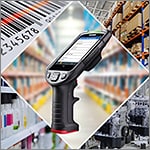
This website describes basic knowledge about handheld computers and how to use them for each industry and operation. It also introduces installation examples by industry and application. Useful for everyone, from beginners to those considering system improvements.
Frequently Asked Questions About Mobile Computers / Handheld Computers
Handheld code readers are a type of barcode reader specialised just for reading (scanning) codes. The readout data should be processed with a connected PC, so handheld code readers cannot be used separately from a PC and carried around like handheld computers.
On the other hand, handheld computers have an LCD screen, CPU and memory built into the body. Programs can be embedded so that not only can they read data but they can also perform other required processing such as checking (displaying), matching and saving data. Programs can be rewritten depending on the usage or purpose of the work. For example, you can set which of several information pieces obtained from one reading is to be entered automatically into which rows/columns in Excel.
The installation requires a variety of equipment such as a PC or a server to communicate with during operation, a battery that supplies the power and its charger and a printer used to output data (when required). It is also necessary to develop software to provide system functions and operability that match the usage environment and the purpose. Examples of issues handled by the software include how to aggregate and process data or how to display the aggregated data on a PC screen.
On the other hand, some handheld computers are designed for simple operations by adopting a common platform, using dedicated software to create business programs quickly and aggregating data as intended with Excel. Hence, it is important to consider the hardware, software, and other items suitable for the purpose, scale and existing system, prior to installation.
The different handheld computer models have a wide variety of functions to match varying industries and applications. For example, to establish communication with a system within a large warehouse or store, select a type with a built-in wireless LAN interface. To perform work in a limited space, select a Bluetooth-equipped model.
There are cases in which recent inexpensive smartphones are used instead. This, however, may lead to expensive application development costs. Handheld computers are designed specifically for business purposes so that they can meet various needs in workplaces. Check the specifications such as the reading distance, speed, and accuracy for various codes and optical character recognition (OCR), as well as shock resistance, environmental resistance and continuous usage time. It is also important to confirm the compatibility, availability and whether technical support can be obtained or not.
Equipping an operator with the appropriate mobile computer enables them to speed up data collection for many business-critical applications (receiving, storage, inventory, picking, poka-yoke, traceability, shipping, etc.) by minimising unnecessary trips to a work terminal. Utilising barcode scanning, where possible, offers a nearly instantaneous data capture method over manual entry or pen & paper systems. Additionally, mobile computers can be connected to your business system to provide operators with immediate feedback and work instructions while they perform their responsibilities.
Adopting the right mobile computer device for your application should cut down on extraneous material and employee movement, lessen the frequency or severity of errors caused by mistakes and increase overall operator productivity.
Companies of all industries rely on various systems to aid with core business operations. The nature and size of the business often dictate the characteristics of the ideal business system, by functionality and infrastructure. Data system technology is continuously evolving and a mobile computer device with a modern platform can adapt to fit the infrastructure of current or dated systems. From a technical standpoint, mobile computers can integrate into these systems via WLAN (WiFi) configurations with supported web browsers, telnet protocol and remote desktop protocol (RDP), as well as Bluetooth connection, batch data transfer using a wired connection, or an application-specific embedded “App” on the mobile computer. Consult with your business system support team and mobile computer product expert to select the most effective solution.
To maximise the value of your mobile computer technology, consider the specifications that will best fit your operators’ needs. Device evaluation should consider factors that prioritise ease-of-use for the intended use of the mobile computer model. A few of these factors include the device’s screen size, form factor, battery capacity and barcode scanning specifications. Work with a product expert to customise your mobile computer’s settings to the best possible configuration, such as restricting access to non-approved work applications on the device or optimising the barcode scanning performance. Additionally, consider the desired lifespan of the mobile computer to minimise total cost of ownership. Review the mobile computer’s durability specifications (max. drop height, tumble rating and ingress protection rating) and available maintenance packages with the manufacturer to protect your investment. Lastly, train your operators on proper usage.

![Read Any Text in an Instant [Logistics Industry]](/img/asset/AS_109923_L.jpg)


